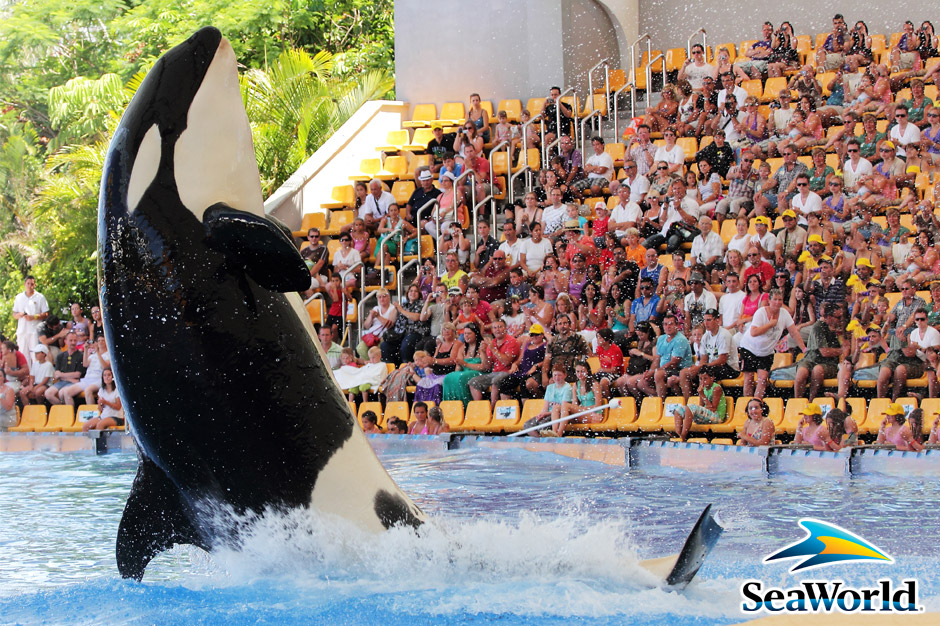For generations, families have trekked to SeaWorld to see "Shamu, the killer whale." More than the main attraction, Shamu is the face of the theme park. Who doesn't conjure images of the massive orca taking the trainer for a spin and then rocketing out of the water to the delight of shrieking audiences? No need for a positioning change, right?
Not quite. It's the 21st century after all.
Cue the theme song from "Jaws" ...
In 2013, the file documentary "Blackfish" exposed a history of marine mammal abuse and claims that the company downplays the deaths and injuries of trainers.
Public outrage and backlash from environmentalists left the park with declining revenue and attendance. Entertainers boycotted the parks. School field trips were abandoned. Family outings cancelled. Public opinion took a deep dive. In a panic, the company released an open letter in major newspapers defending its operations and also created a website to counter allegations made by animal rights activists.
Two years later, SeaWorld is still in crisis mode. A positioning change was in order.
Last month, SeaWorld announced a new ad campaign to help win back public opinion and customer loyalty. Instead of emphasizing entertainment and family fun, the new print and YouTube campaign focuses on the theme park's efforts to responsibly care for animals in captivity and in the wild. It's a proactive attempt to reposition the company from a money-driven entertainment dynasty to a socially responsible wildlife enterprise.
Will the strategy work?
Repositioning, or positioning change, in times of crisis is not easy. Once an idea is cemented in the mind of a prospect, it is very difficult to dislodge. But, let's be clear. What makes SeaWorld's problem "epic" has less to do with "Blackfish" than it has to do with the times. In the nature-concerned 21st century, the image of an 11-ton orca, swimming circles in a tank, subsisting on buckets of fish and human applause is an anachronism. It's an idea swimming against the tide. You can't buck a trend. SeaWorld will need to do more than reposition its message. It will need a positioning change of the face of its business. In the end, getting rid of the whale may be the only way for SeaWorld to solve this whale of a problem.
Innis Maggiore Case Study

Taking a bite out of the competition
Few meals are as satisfying - and popular - as the classic pairing of a burger and fries. And for restaurateurs, the gourmet burger marketplace is beginning to feel crowded. Five Guys. The Rail. B Spot. And that's just Northeast Ohio. Across the nation, other regional chains like Shake Shack, Fatburger and Mooyah are all vying for a seat at the table. It's a challenge to stand out.
But when the co-founders of Old Carolina Barbecue Company opened Smoke the Burger Joint, they crafted an idea so original, you can really sink your teeth into it.
Having spent years perfecting their recipe for authentic and award-winning barbecue, they knew it's not simply the toppings that make a burger great. What matters most is how it's cooked. While other restaurants start by thawing a frozen patty and then frying it on a grill, Smoke burgers are just that - smoked. Smoke patties are fresh - never frozen - slow smoked over real hickory wood and then flash finished on the grill for an infused smoky taste that changes the burger game.
One bite, and it's easy to see why Smoke's claim, "The best burger is a smoke'd burger," is as 100% pure as the custom blend of Angus and short loin beef in every burger it makes.
The idea sizzled. Through its distinctive taste, Smoke has created what Positionists refer to as meaningful differentiation. That is, in a crowded market, Smoke's difference is in the way the burger tastes. What a concept!
Check out the menu, designed by Innis Maggiore, at http://burgersbysmoke.com.




